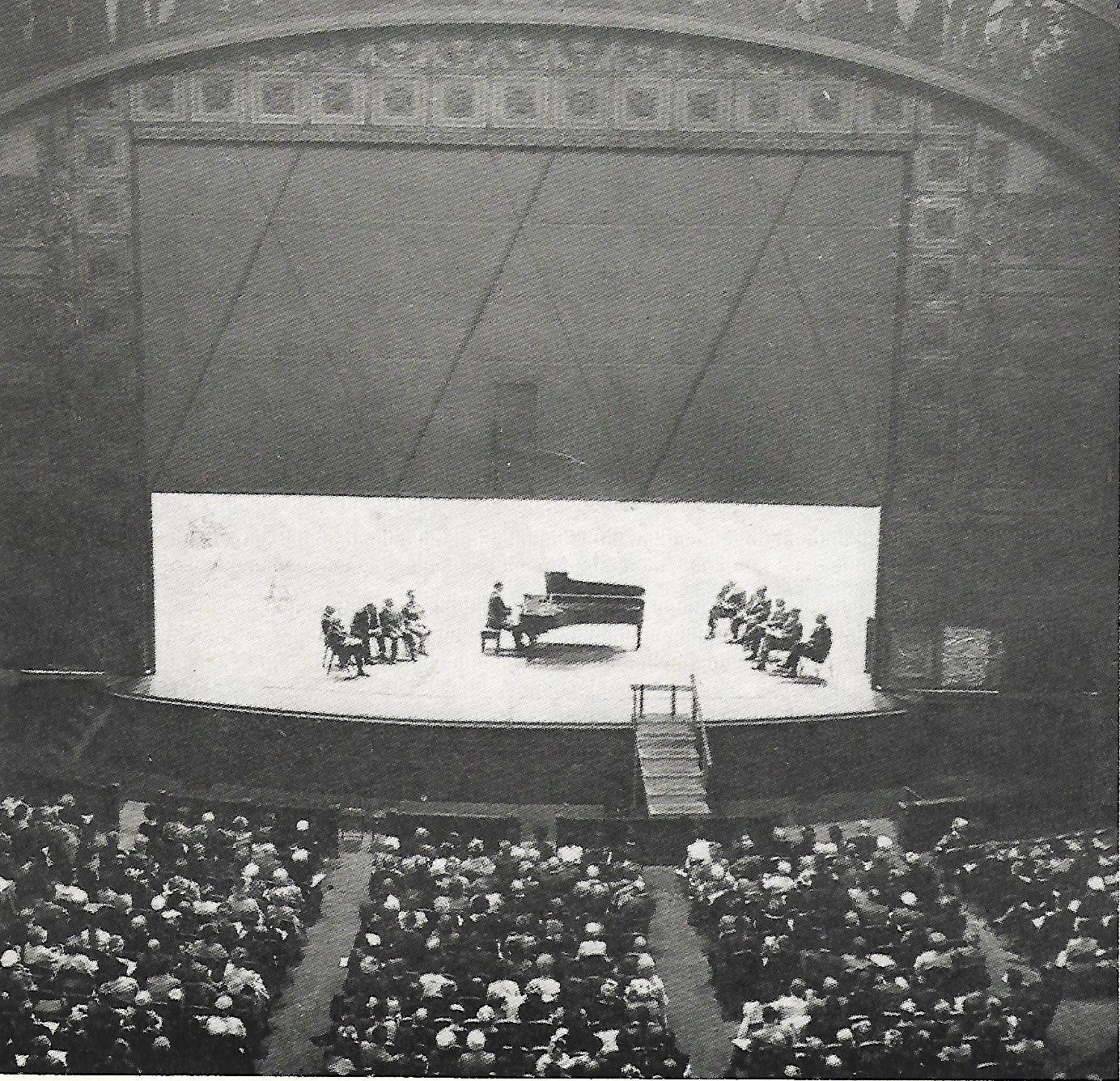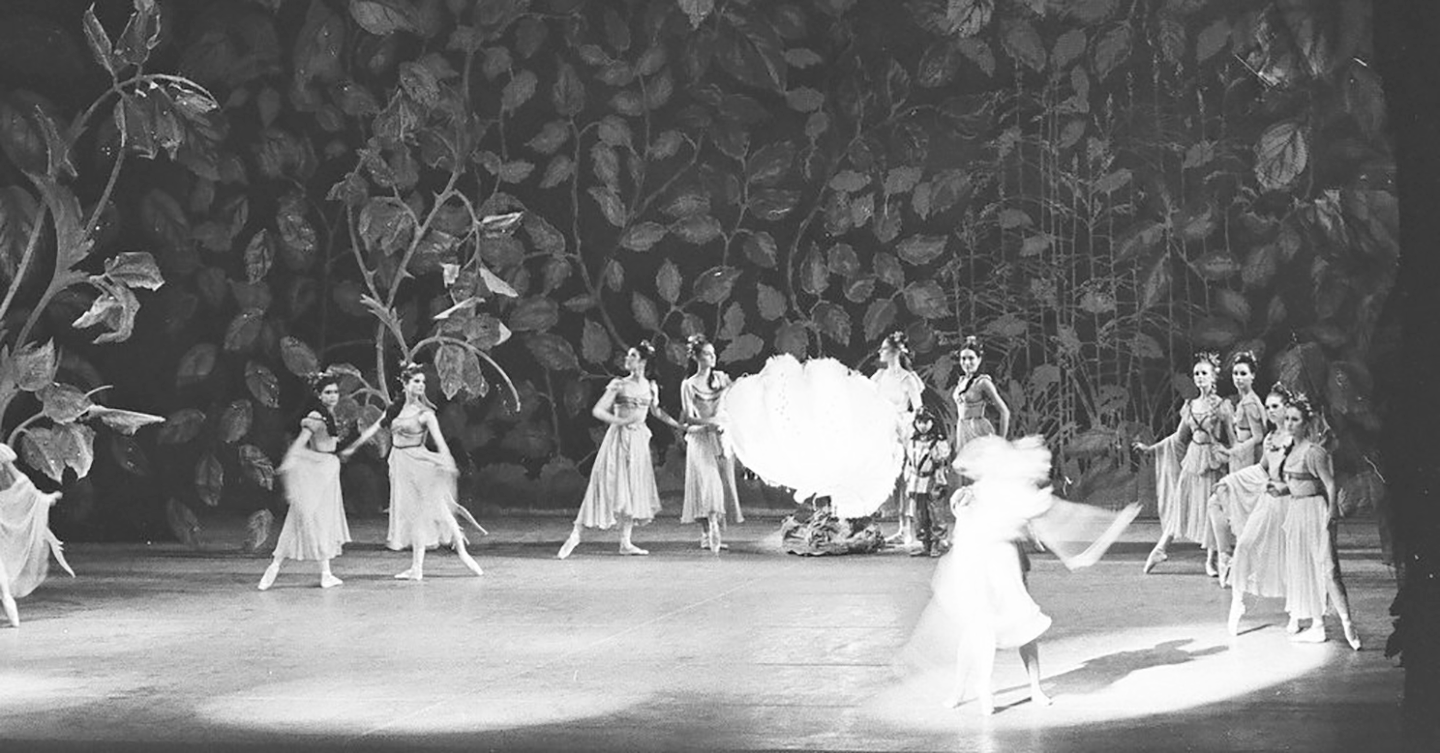
1960-1970
Auditorium Theatre Council
When Roosevelt University’s President, Edward J. Sparling, first purchased the Auditorium Building, he immediately fell in love with the theatre. Unfortunately, at the time, Roosevelt University was only two-years old and did not have the capacity to restore the theatre while also handling the institution’s growing student population. In 1960, the Auditorium Theatre Council was formed, an organization committed to the restoration and day-to-day operations of the theatre. Leading the Auditorium Theatre Council was violinist and former Concert Master of the Women’s Symphony Orchestra of Illinois, Mrs. Beatrice T. Spachner.1

The Auditorium Renaissance
The resurrection of The Auditorium was a challenge from beginning to end. Several obstacles hampered initial fundraising efforts, particularly the construction of the nearby Arie Crown Theater, and the lingering skepticism surrounding a building that had lain dormant and in a state of disrepair for quite some time.
“At first no one wanted to put his money on a dead horse. People had been urging for years that the Auditorium be torn down and replaced with a parking garage...” 2
Unexpectedly in 1962, new issues arose that created ever more challenges for the already daunting project.
Originally the restoration was estimated to cost around $3 million, but after the architects spent $50,000 on research, they raised the estimate to $4.25 million with hints that the project might even cost more. The spike in the budget led to several members of the Auditorium Theatre Council leaving, believing that the project was too ambitious to complete.
Mrs. Spachner and the remaining Auditorium Theatre Council members continued to move forward with their mission to save the theatre and decided to seek advice from other experts. In 1963, Harry M. Weese, a celebrated Chicago architect who helped restore many of Chicago’s other historic buildings, joined Mrs. Spachner and the Auditorium Theatre Council as the chairman of the Council’s building committee to help oversee the restoration project. Weese was not only qualified and experienced, but also dedicated and honest. His generous commitment, coupled with the unwavering passion and iron will of Beatrice Spachner, created a union of two dynamic forces that would prove instrumental in the successful restoration of this beloved and iconic structure.

“He undertook to reevaluate and replan the entire project on the basis of his belief that Adler and Sullivan knew what they were doing and that the way to restore their work of genius is to remove the cobbling of later, lesser men, and repair only where clearly necessary and preserve as much of the original structure as possible.”3
Harry M. Weese and the Council consulted with other theatre designers and engineers to ensure that their new restoration plan was logical. Not only were they assured, but they also received feedback that the stage and its machinery needed very little work. They also recommended some money-saving alternatives that ended up cutting the total cost of the project back closer to the original $3 million that was proposed.
Van Cliburn
As a special favor to Mrs. Spachner and the Council, the internationally renowned pianist Van Cliburn made a guest appearance at The Auditorium for publicity and fund-raising purposes.

"The light was dim, the theatre dusty, the audience small. But according to the lucky few who heard him play that day, the music was glorious, the acoustics were perfect. And since then, Van Cliburn has been one of the Auditorium’s most vigorous boosters.”

Letter to Beatrice Spachner:
“I am so very thrilled to hear about all the latest developments in the revitalization of the wonderful Auditorium Theatre. Of course, I believe so strongly in this project, not only from the standpoint of preserving a hall full of great tradition, but also to give back to Chicago and the United States one of the great cultural landmarks...” April 23, 1964
Re-opening Night
After facilitating a 7-year-long fundraising campaign that raised nearly $3 million to restore the theatre, The Auditorium opened its doors again on October 31, 1967. In a triumphant culmination of Spachner and Weese’s herculean efforts, the celebration was one for the ages. The grand reopening featured a performance of George Balanchine’s A Midsummer Night’s Dream by former New York City Ballet principals Suzanne Farrell and Edward Villella.



Back on Track
After re-opening night, The Auditorium’s reputation of being the center for the performing arts was revived. For the remaining part of the decade, the theatre had performances by New York City Ballet, Duke Ellington, Liza Minneli, Joffrey Ballet, Aretha Franklin, Jimi Hendrix, Dave Brubeck, Diana Ross and the Supremes, and more.
Citations
1. “A New Lease on Life” Talmanac: Restoring the Auditorium.
2. Hunt, Ridgely. “Resurrection of a Masterpiece.” Chicago Tribune, October 29, 1967.
